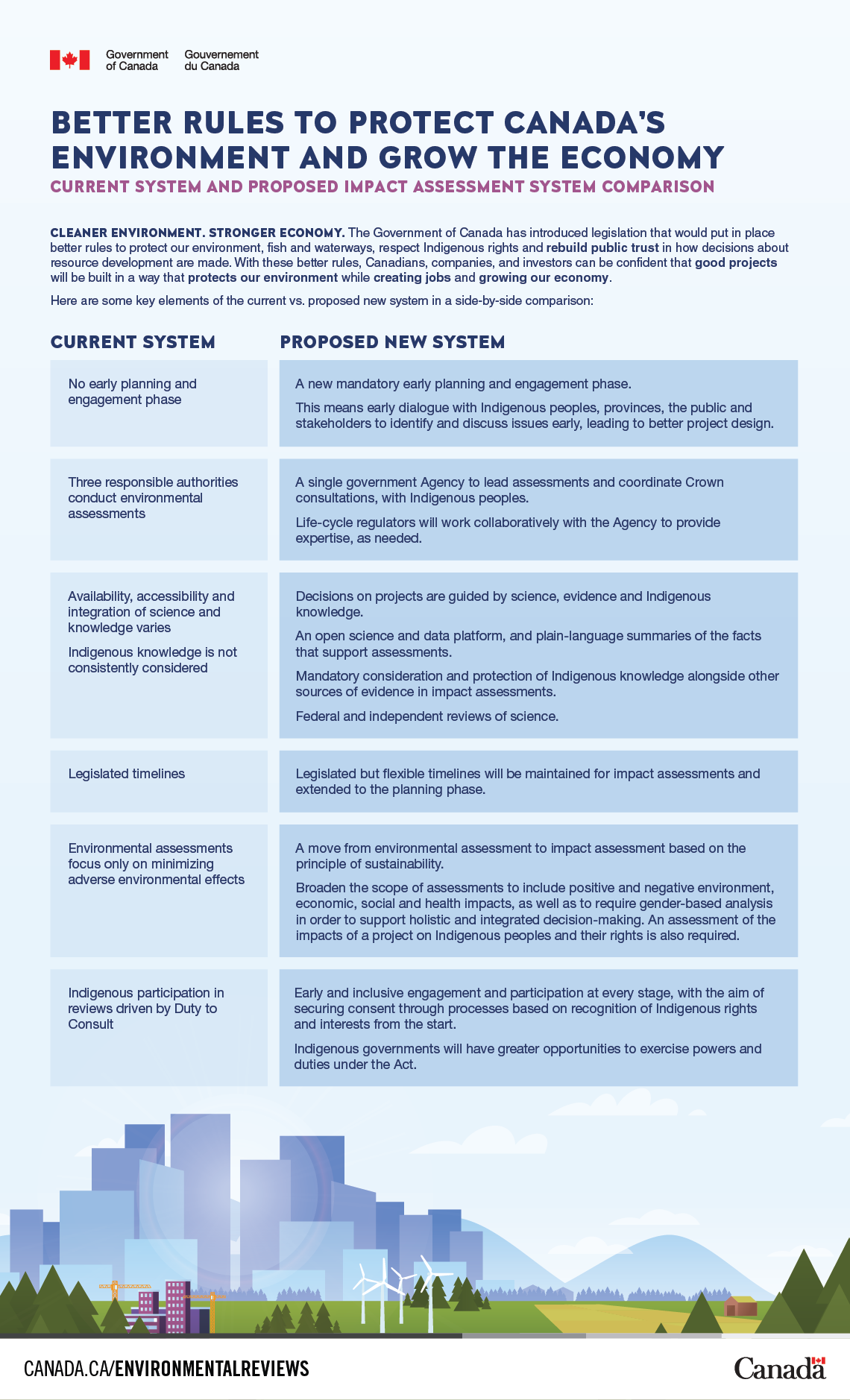Better rules to protect canada’s environment and grow the economy
Click on image to enlarge

Long description
Current system and proposed impact assessment system comparison
CLEANER ENVIRONMENT. STRONGER ECONOMY. The Government of Canada has introduced legislation that would put in place better rules to protect our environment, fish and waterways, respect Indigenous rights and rebuild public trust in how decisions about resource development are made. With these better rules, Canadians, companies, and investors can be confident that good projects will be built in a way that protects our environment while creating jobs and growing our economy.
Here are some key elements of the current vs. proposed new system in a side-by-side comparison:
| Current System | Proposed New system |
|---|---|
No early planning and engagement phase |
A new mandatory early planning and engagement phase. This means early dialogue with Indigenous peoples, provinces, the public and stakeholders to identify and discuss issues early, leading to better project design. |
| Three responsible authorities conduct environmental assessments | A single government Agency to lead assessments and coordinate Crown consultations, with Indigenous peoples. Life-cycle regulators will work collaboratively with the Agency to provide expertise, as needed. |
Availability, accessibility and integration of science and knowledge varies Indigenous knowledge is not consistently considered |
Decisions on projects are guided by science, evidence and Indigenous knowledge. An open science and data platform, and plain-language summaries of the facts that support assessments. Mandatory consideration and protection of Indigenous knowledge alongside other sources of evidence in impact assessments. Federal and independent reviews of science. |
| Legislated timelines | Legislated but exible timelines will be maintained for impact assessments and extended to the planning phase. |
| Environmental assessments focus only on minimizing adverse environmental effects | A move from environmental assessment to impact assessment based on the principle of sustainability. Broaden the scope of assessments to include positive and negative environment, economic, social and health impacts, as well as to require gender-based analysis in order to support holistic and integrated decision-making. An assessment of the impacts of a project on Indigenous peoples and their rights is also required. |
| Indigenous participation in reviews driven by Duty to Consult | Early and inclusive engagement and participation at every stage, with the aim of securing consent through processes based on recognition of Indigenous rights and interests from the start. Indigenous governments will have greater opportunities to exercise powers and duties under the Act. |